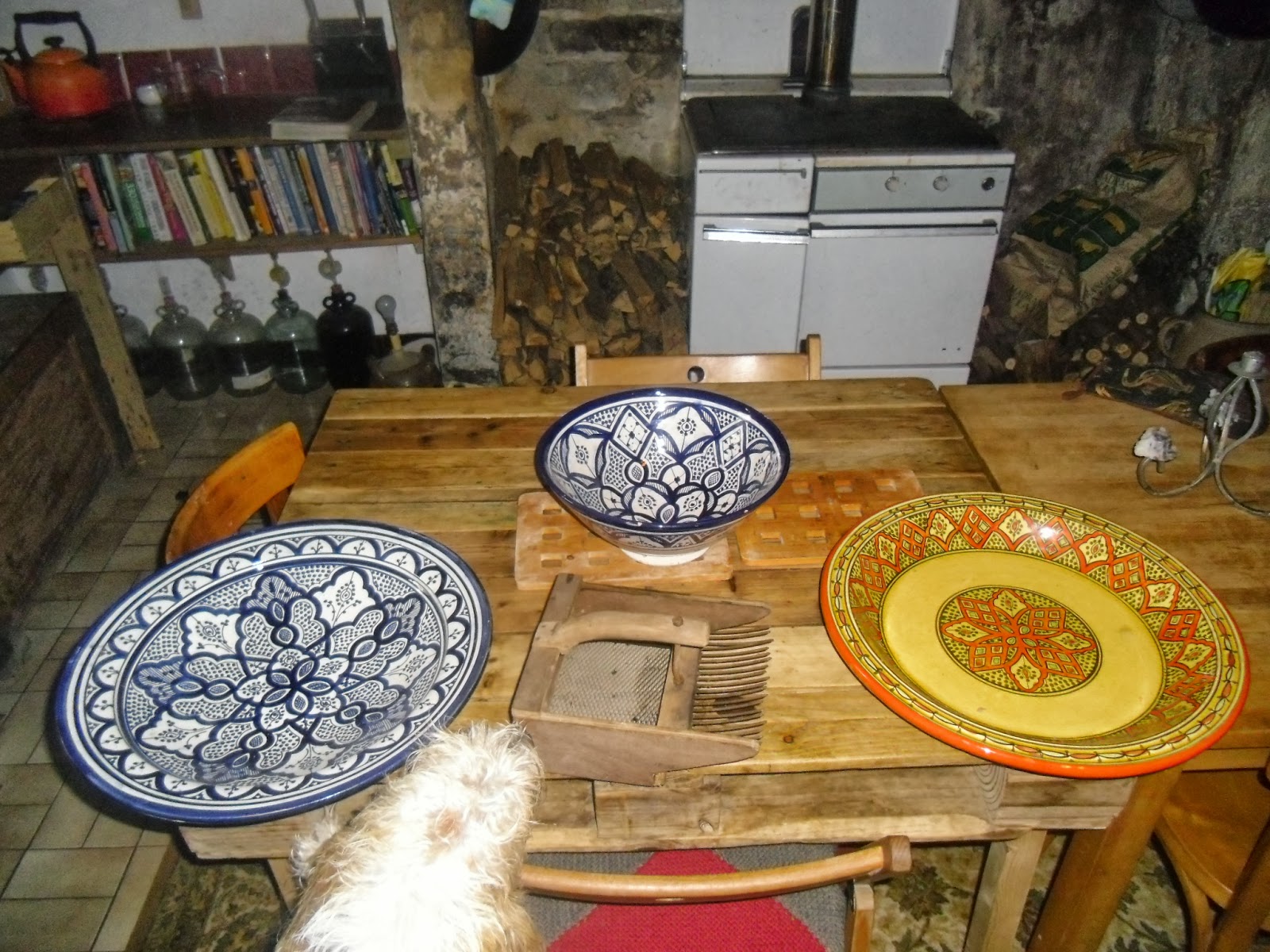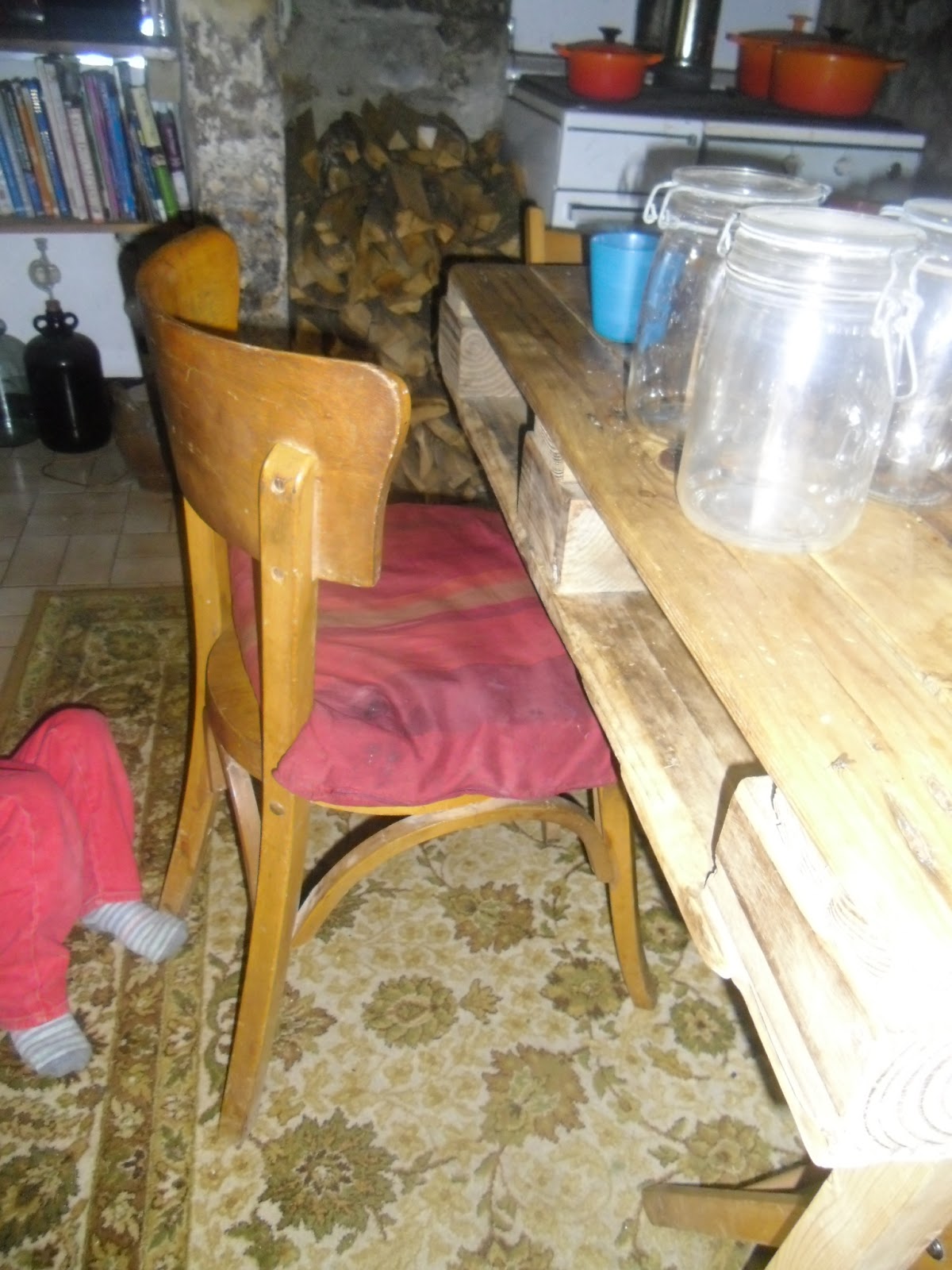The last week and a
half has marked somewhat of a milestone in life here at Chez Powell. The pigs
went to slaughter and we’ve been processing pretty much every day since. Rather
than try and cram all of this into one post I thought I’d break it down a
little. This also means that I am now “committed” to writing a couple of posts
in relatively (for me!) quick succession
 |
| Summer running |
 |
| The last supper |
Of course, if you want
to eat pork, first of all you need to kill a pig. At least you do if you
haven’t gone out to the supermarket to buy it. Before this you need to rear it
and look after it. We’ve tried to keep our pigs as humanely as possible.
They’ve been kept outdoors and their food was a mixture of bought from our
local mill, which is organic and all locally sourced, and veg garden waste.
Their pen surrounded an old lime tree to give them shade in the sun along with
their pig ark for sleeping and rain/snow protection. I think that even if you
don’t have the opportunity to rear your own pigs you should at the very least
demand more humane standards from your supplier. A common complaint about pork
reared this way is that it is too expensive for the “average” family to afford.
In answer to this I say, don’t buy it then. Forgo it this week or month and get
some as a treat. In western society we eat too much meat and perhaps if we ate
less the welfare of our animals would improve.
Day one of our
processing was slaughter. I felt it was important to go with them and I was
there when the final deed was done. I felt that it was part of my responsibility
to the animals to see it through to the end and make sure it was done properly.
Which it was and was done very quickly.
Other than being somewhere a bit new I don’t think they pigs knew much
about it. It’s an odd mixture of sad to see them go, a realisation that such a big animal is going to die to feed you but proud that a massive
step has been taken in self sufficiency and the knowledge that we gave them the best care we could (certainly a lot higher standard than your average supermarket pig would have had). Once you have a dead pig that isn’t
the end. You need to drain the blood and remove the hair and top layer of skin.
This was done with blowtorch, scraping and washing as we went along. The guts
were taken out, which we kept, and the pigs were sawn in two.
 |
| A census pig tried to test me once! |
The plan here is to
use every bit of the pig for something, so, the end of day one was actually
spent dealing with some of the bits that go off the fastest. This included;
soaking the caul fat (a layer of fat around the stomach used for wrapping
things like faggots in water, attempting to wash out the intestines and
knocking up some spiced liver for tea. (No fava beans or Chianti though!)
 |
| Dracula's midnight snack |
Number
one of these is the blood. The last two to three hours of the day were spent
making black puddings. Essentially what you do is mix the blood with sautéed
onions, fat, cream, breadcrumbs, salt, pepper and then pretty much whatever else
you want as flavourings. We kept ours simple this year throwing in a few spices
only. Then you fill some casings and simmer for a bit.
 |
| Stuffing the pudding! |
The most difficult part
is filling the casings. After it took nearly two hours to make twelve and we
lost three when they exploded in the water we decided to simplify things by
cooking it up as a “cake”. This was then sliced up and put in the freezer in
breakfast portions. As the next day was
going to be spent butchering four sides of pork and it was now nearly two in the
morning the bed did call.
 |
| Before...... |
 |
| .....after |
 |
| One happy customer |
The biggest
disappointment of the day were the intestines and stomachs which I just couldn’t
clean out and they kept splitting. Spilling their contents all over the bath!
However I read about the old cabbage trench that British farmer/smallholders
used to use before the world went all squeamish about dealing with waste. They
would dig a trench and everything would go into it. Urine, poo (human), chicken
and rabbit inners etc etc. At the end of the year this would be covered in
compost and the following spring the cabbage break would be planted on it. Inspired
by this our inners started off the new compost heap with everything from this
year’s heap that hasn’t broken down yet on top of them. This heap won’t go on
the garden until Spring 2015 so plenty of time for it to break down and release
all those nutrients into the compost.
Next post, Days 2and
3: Butchery and offal (Yum yum)




















































